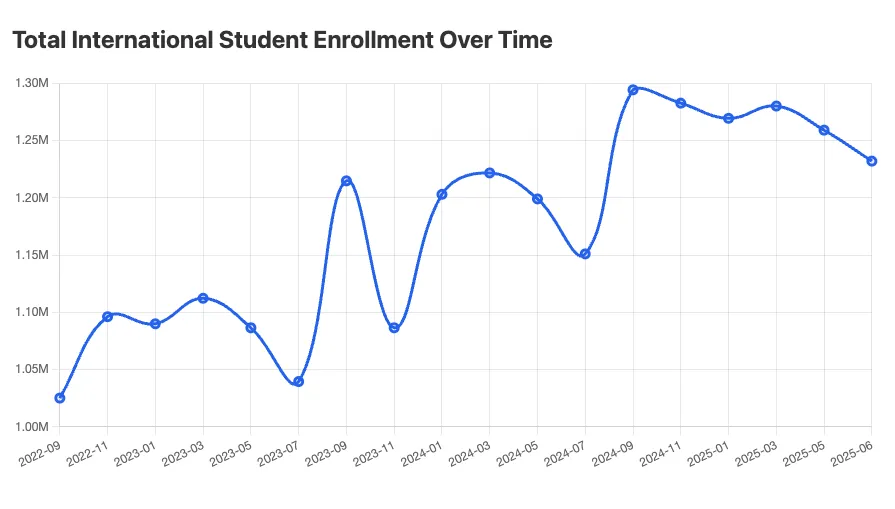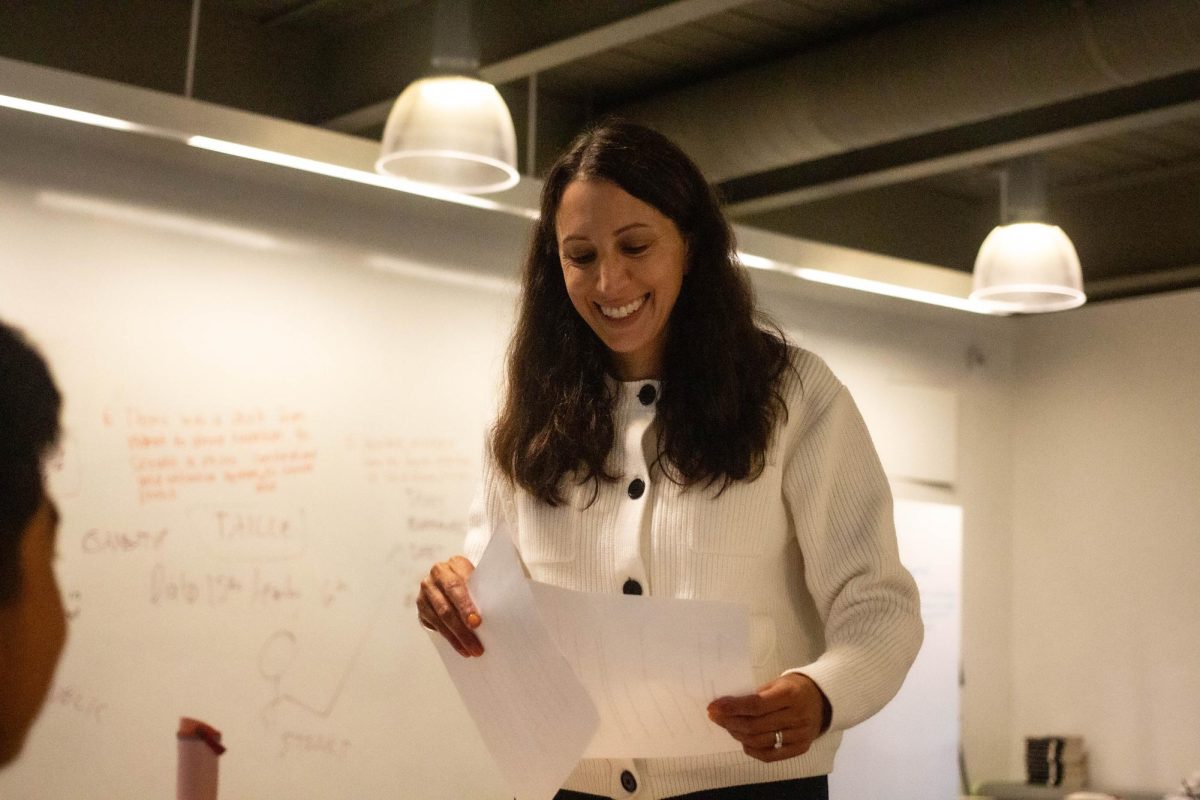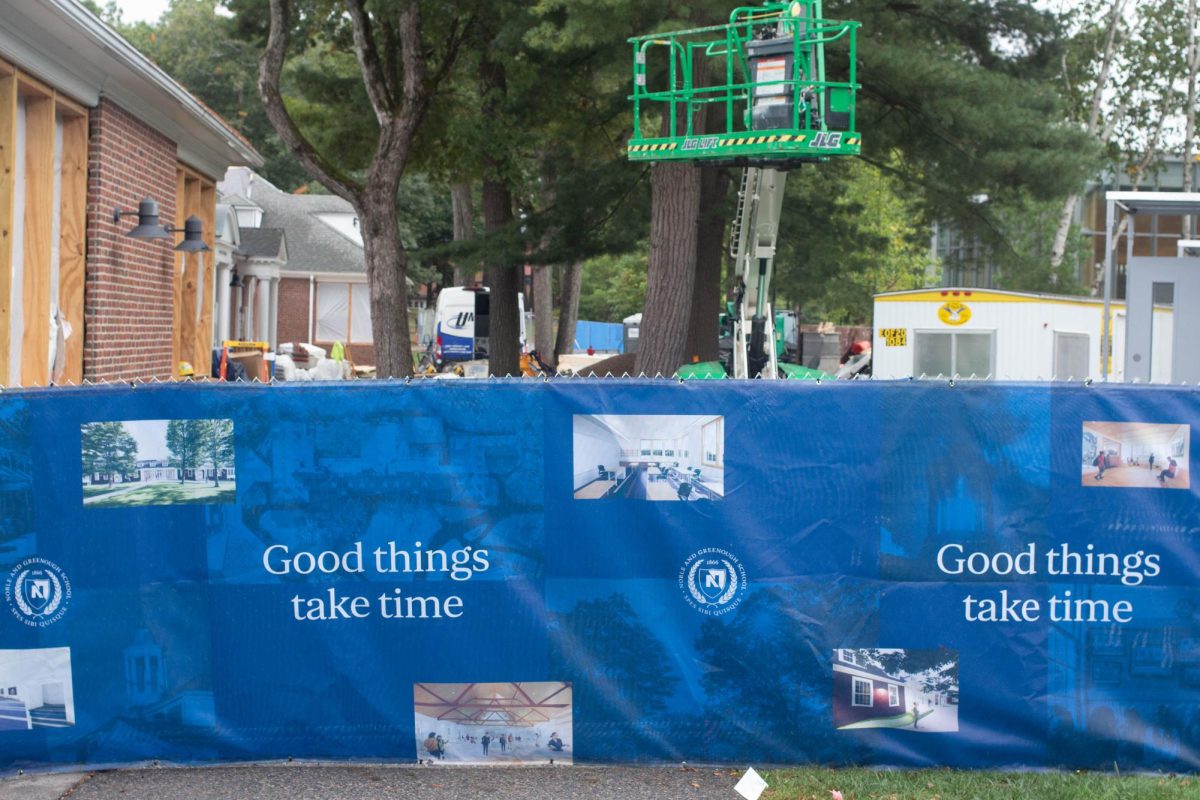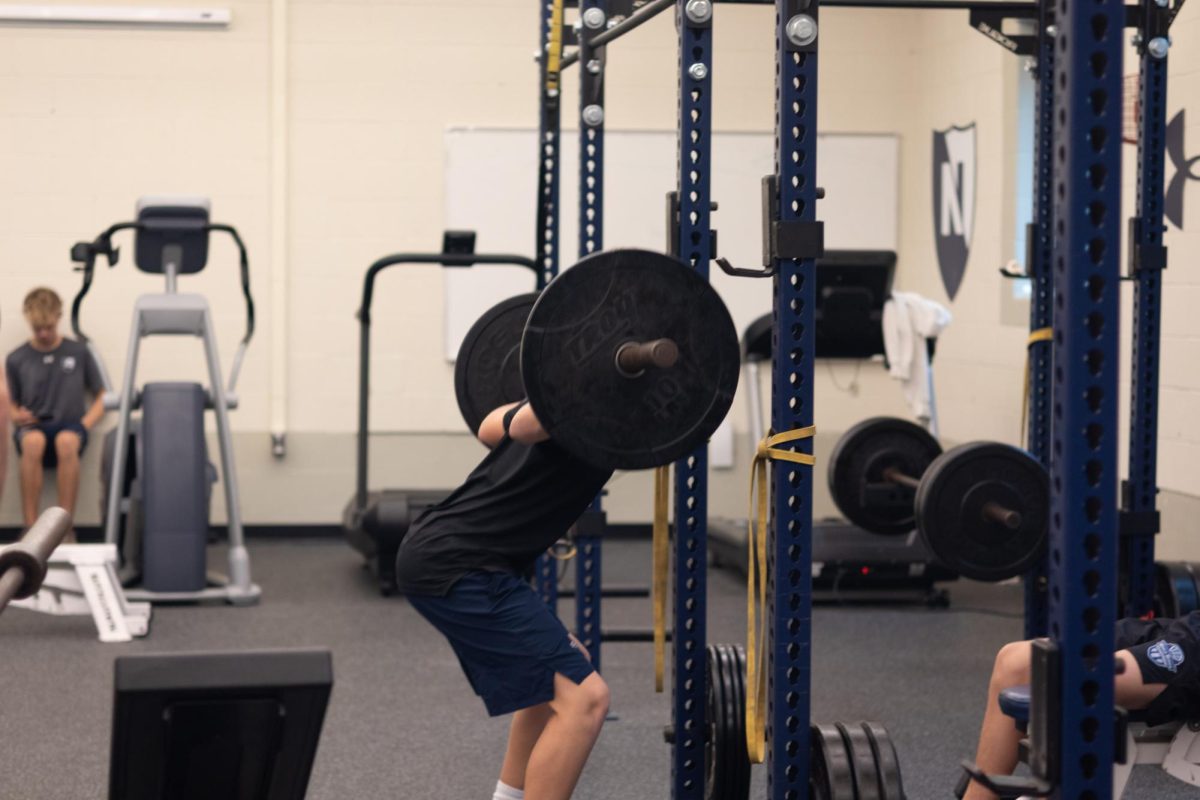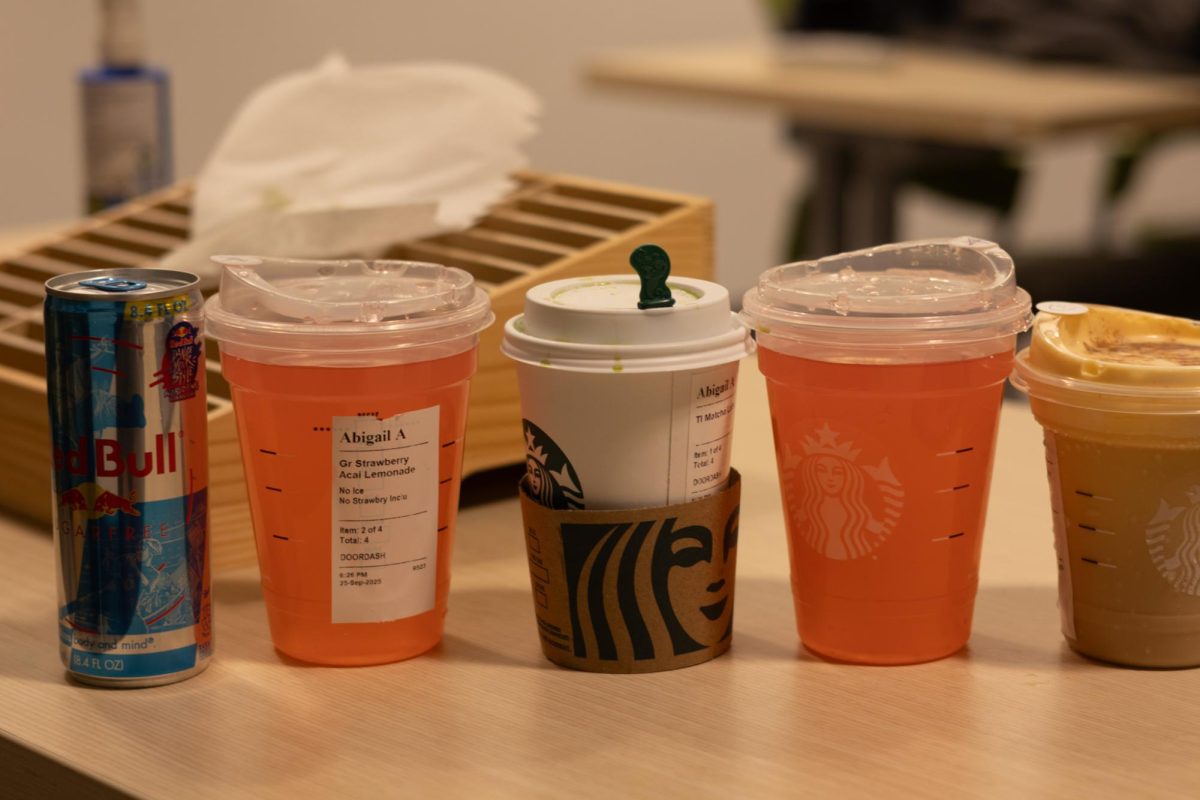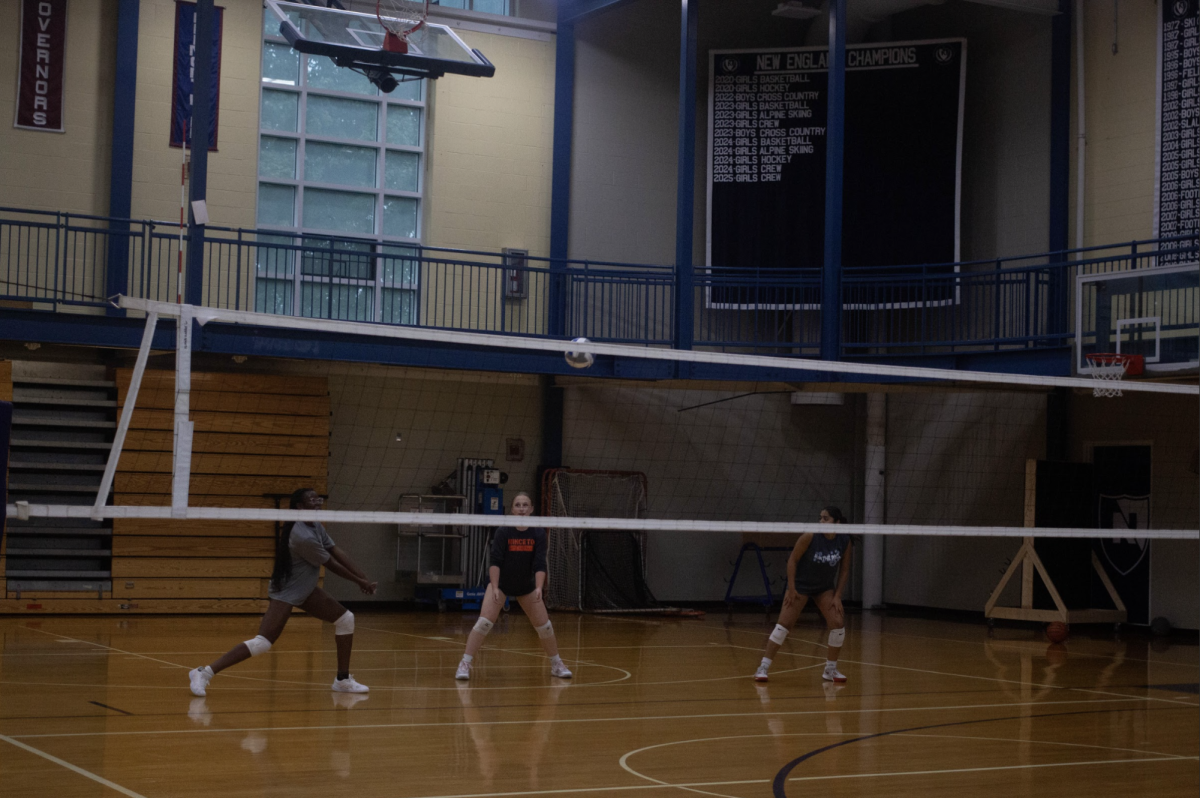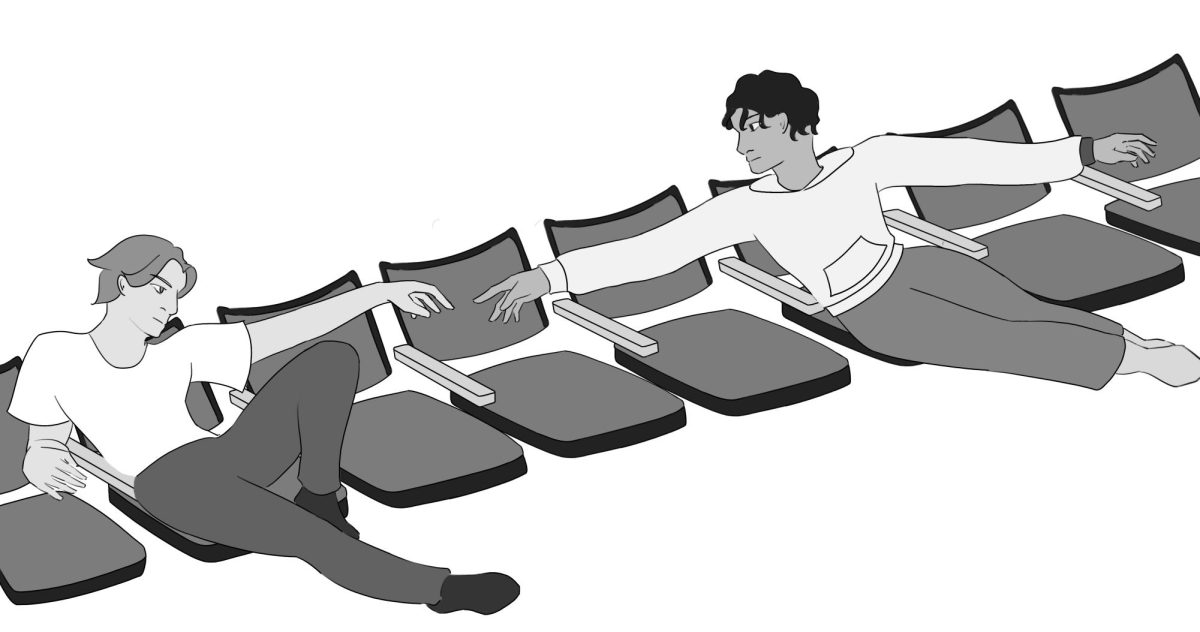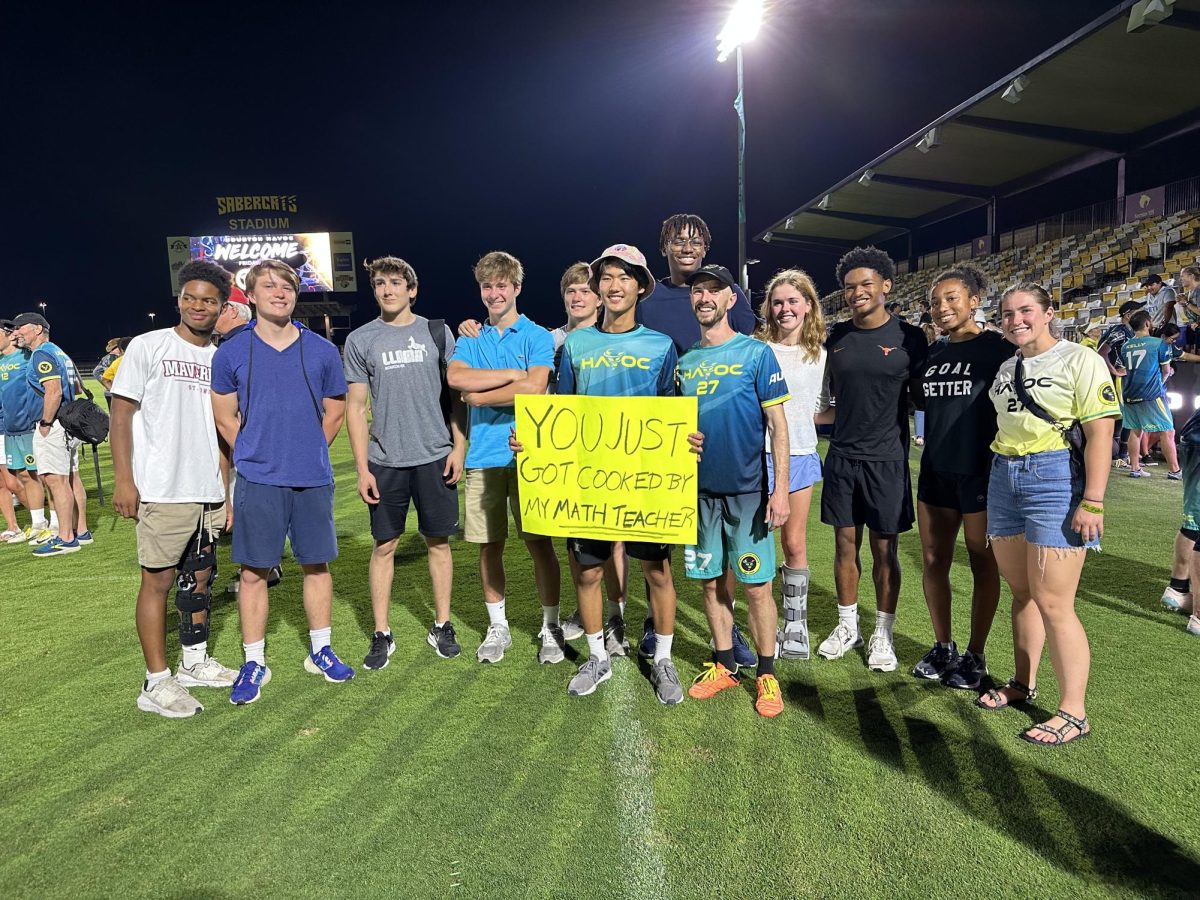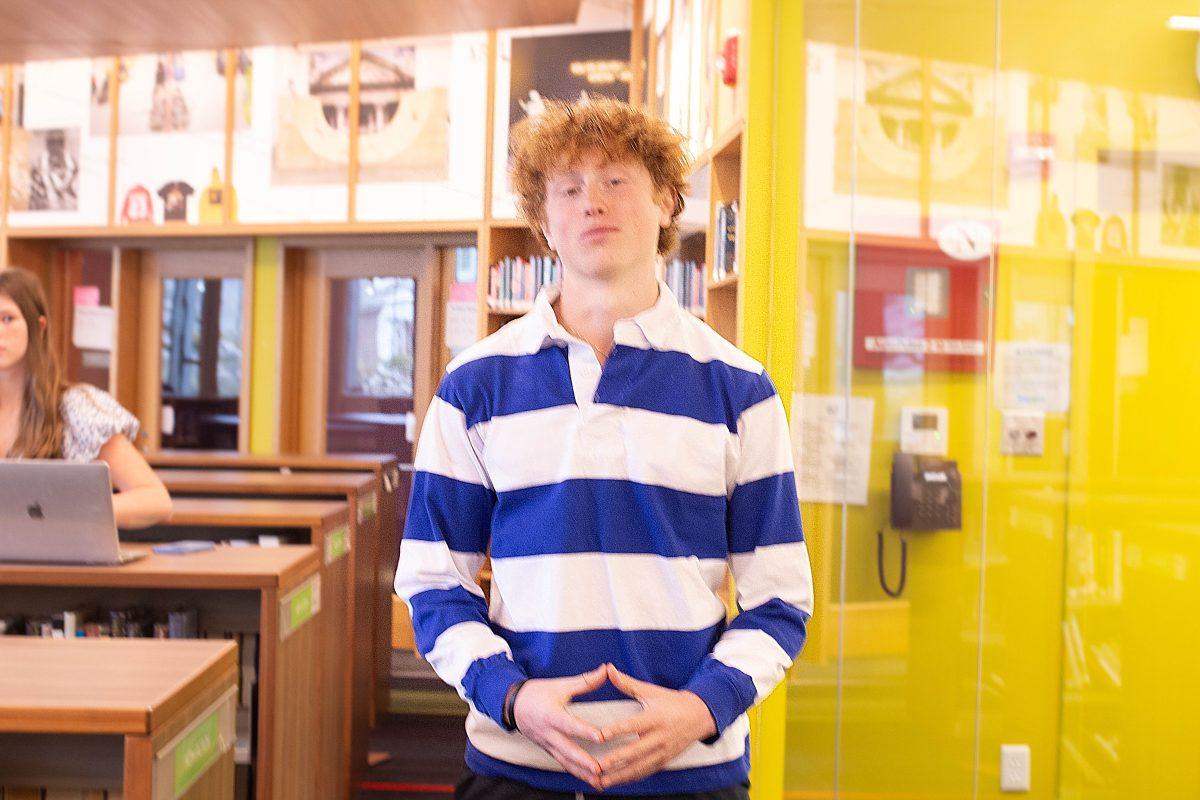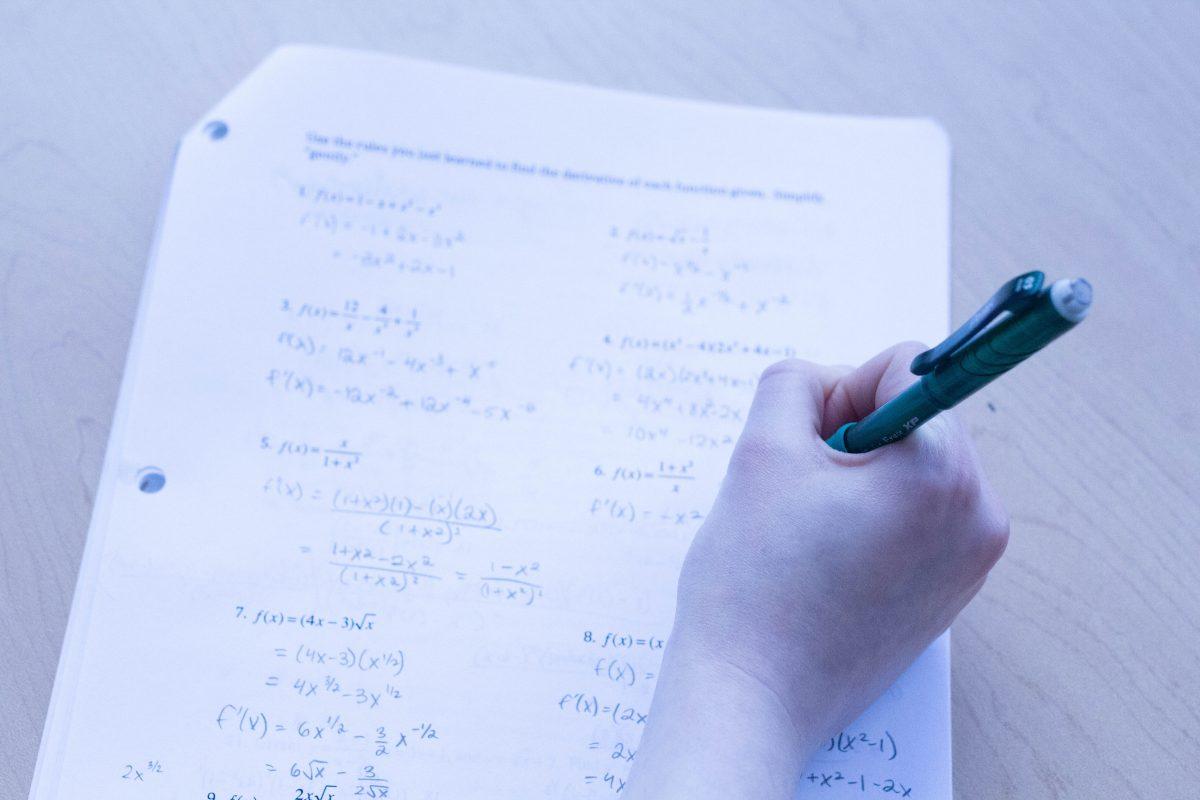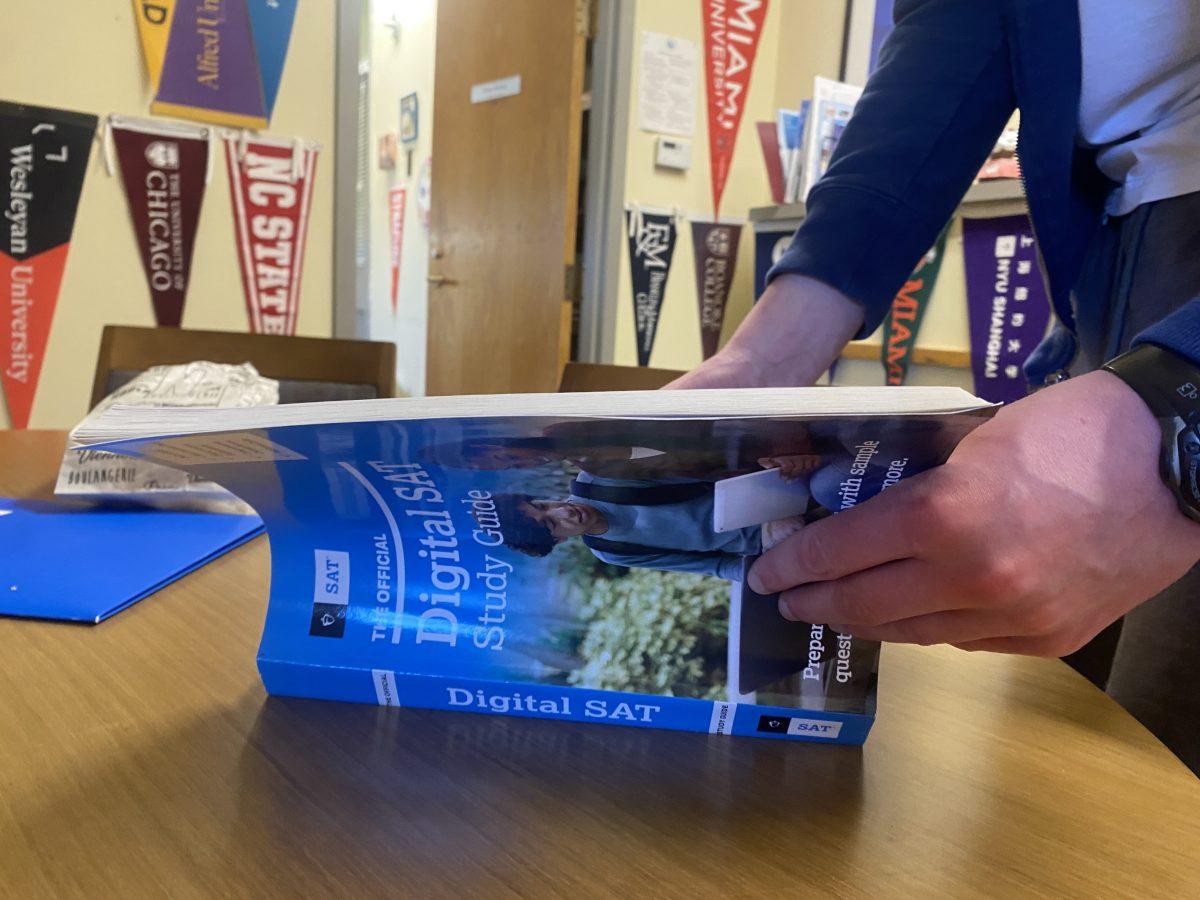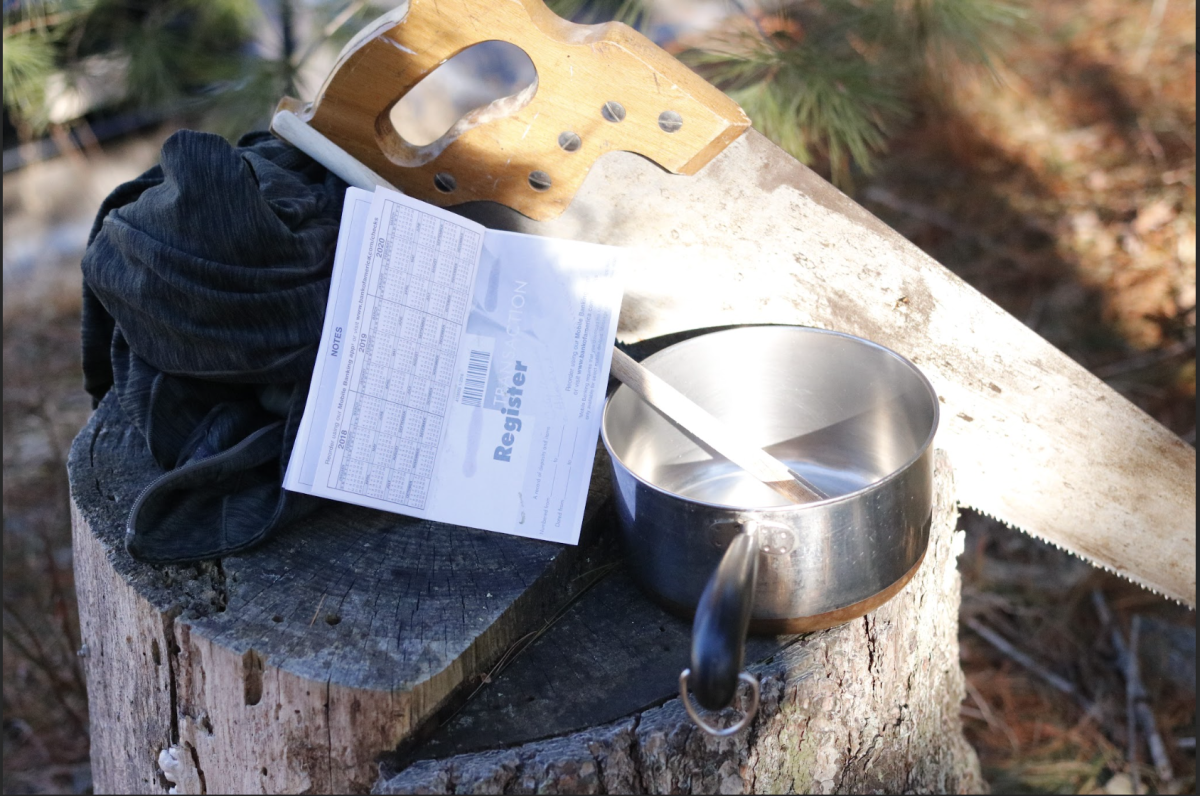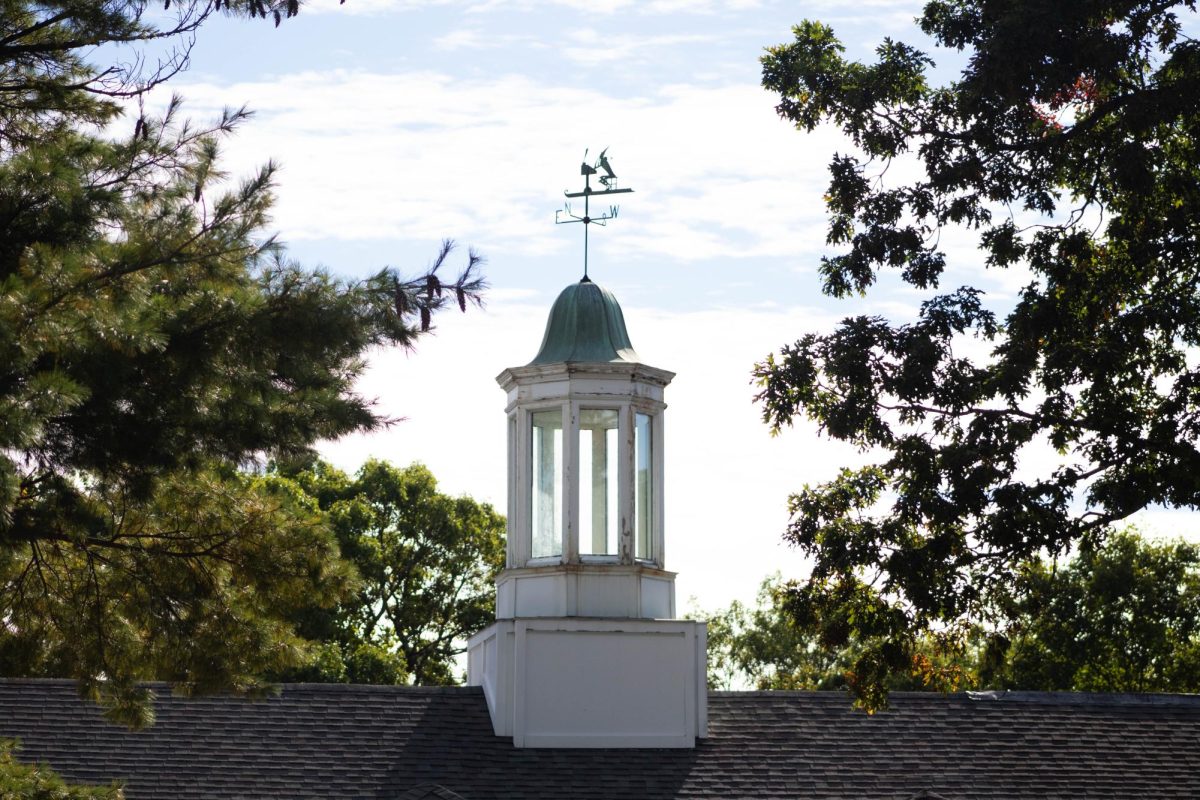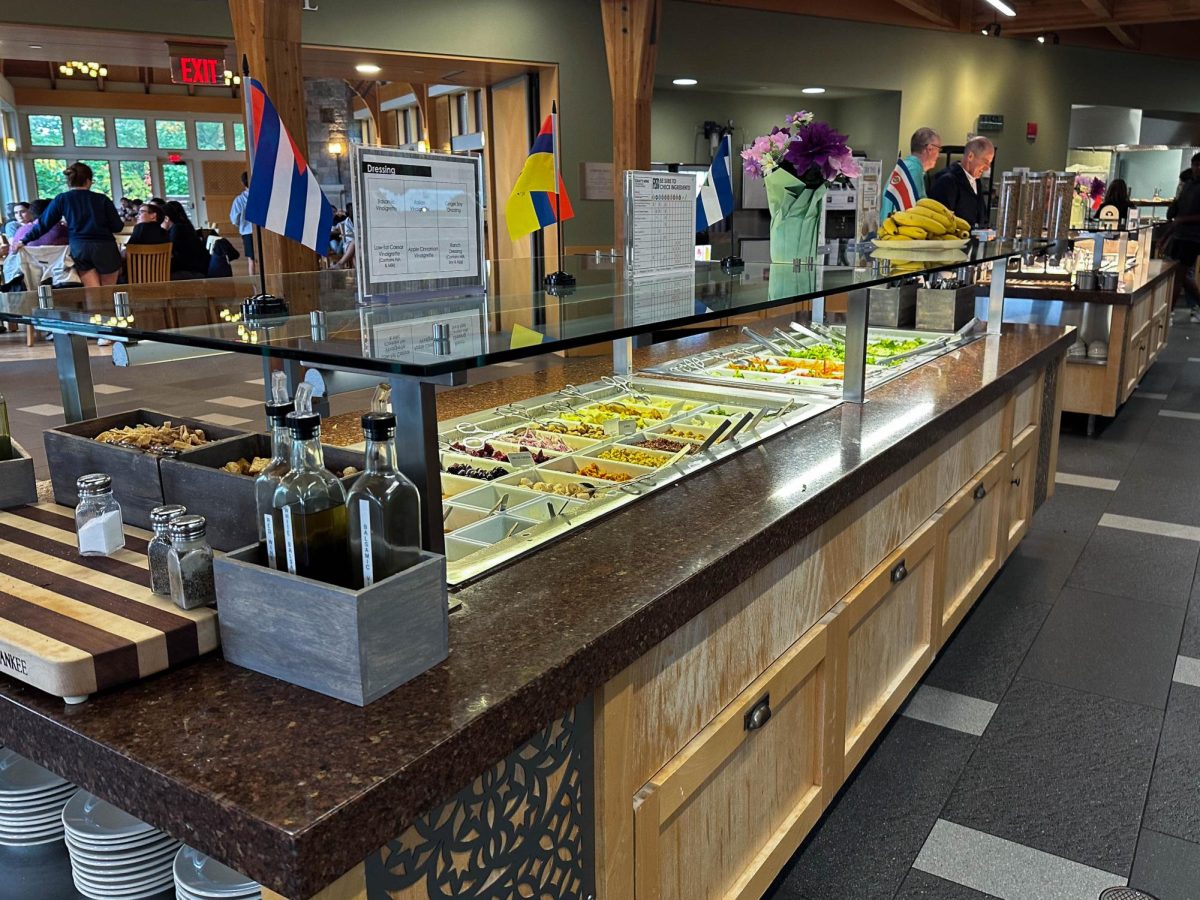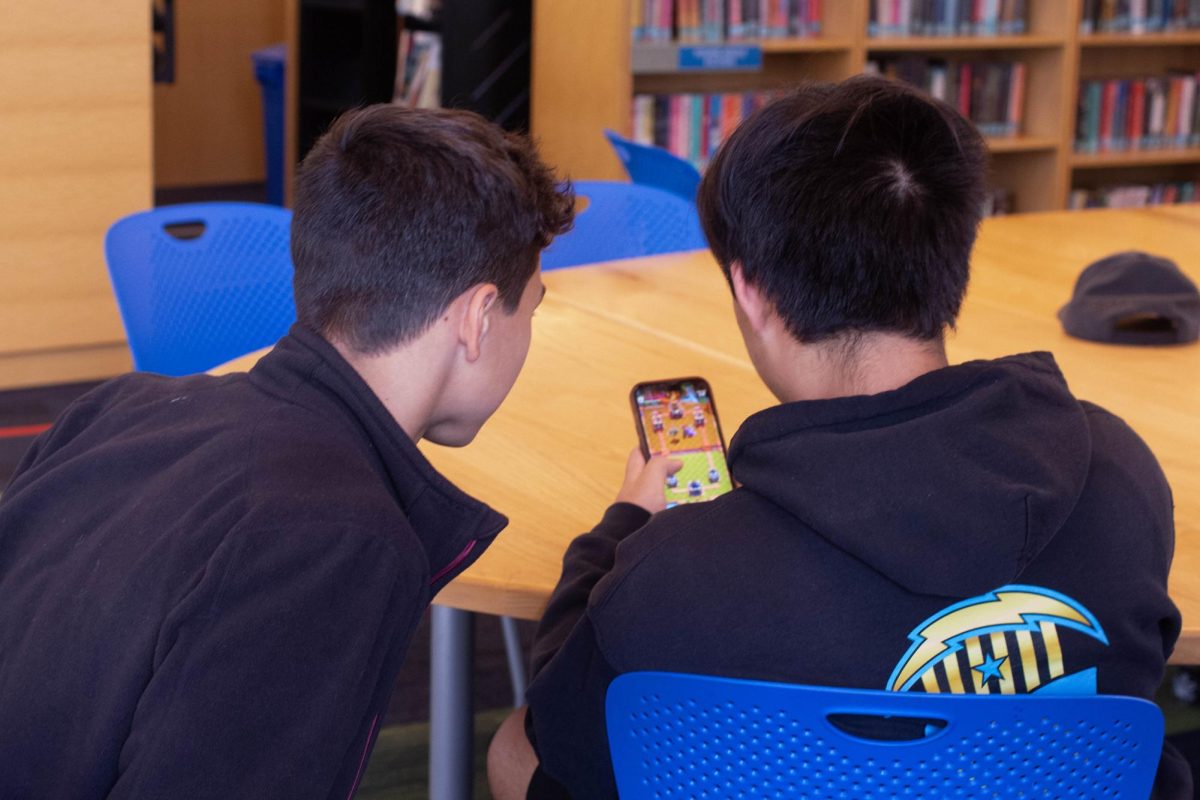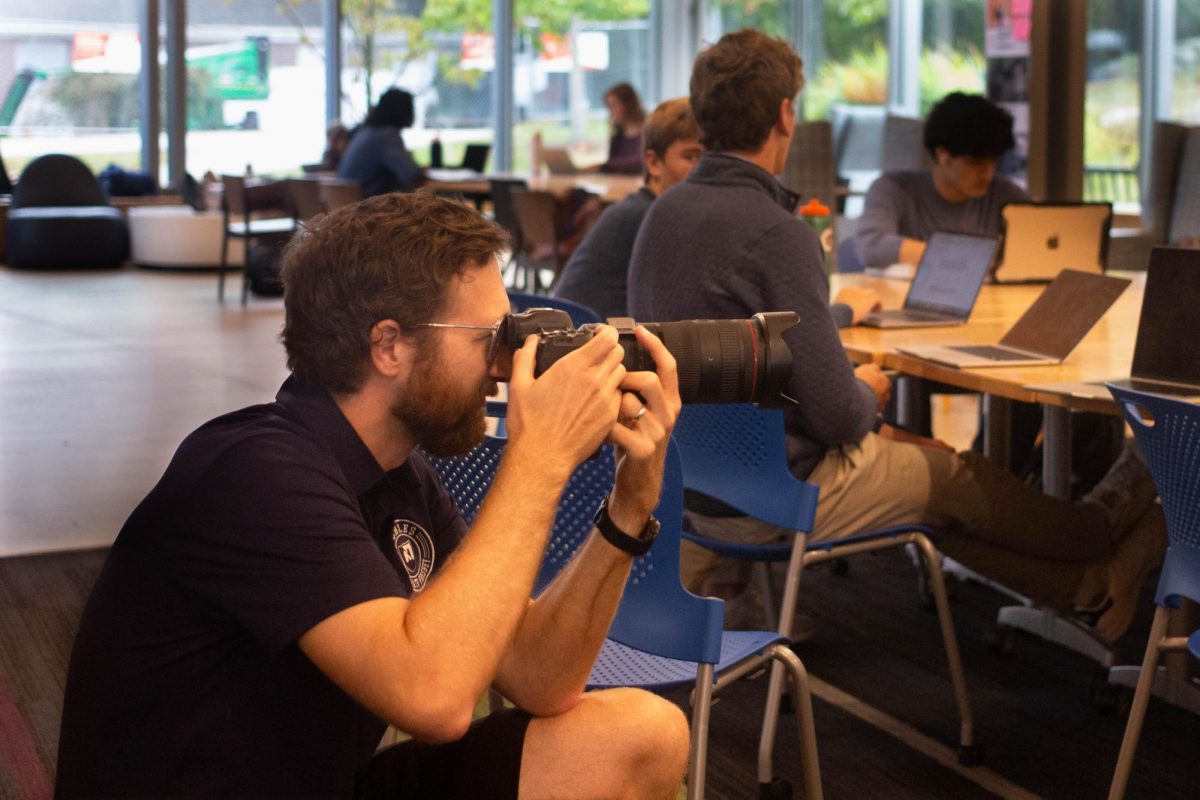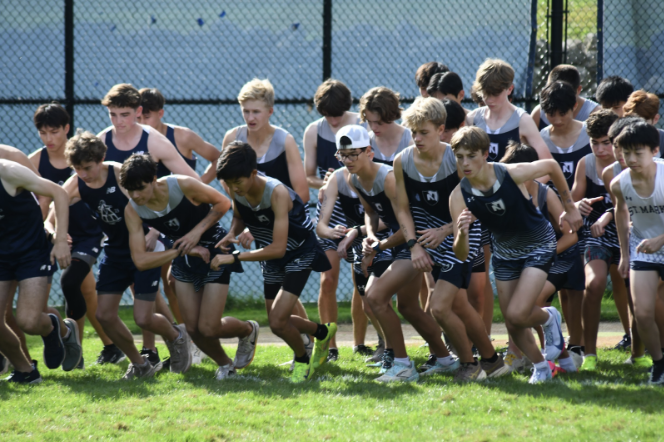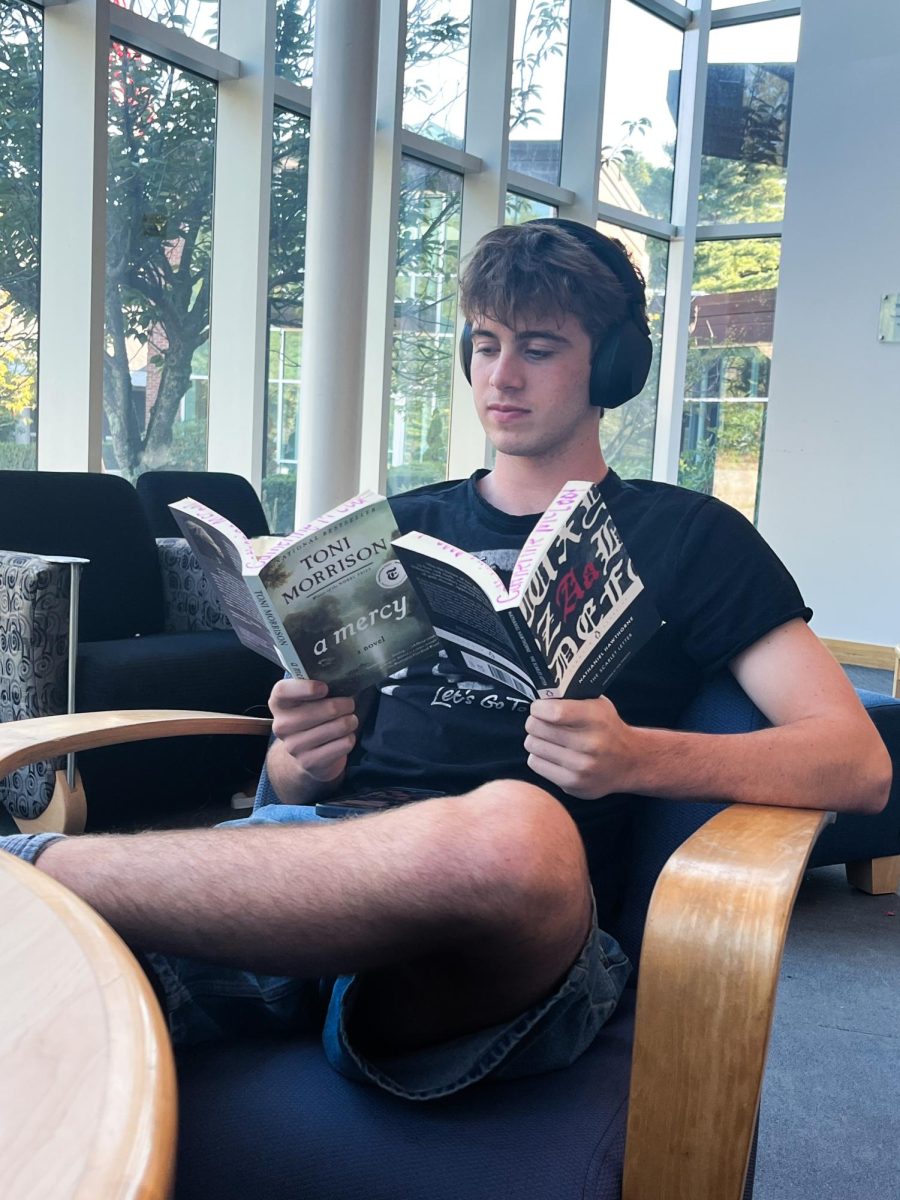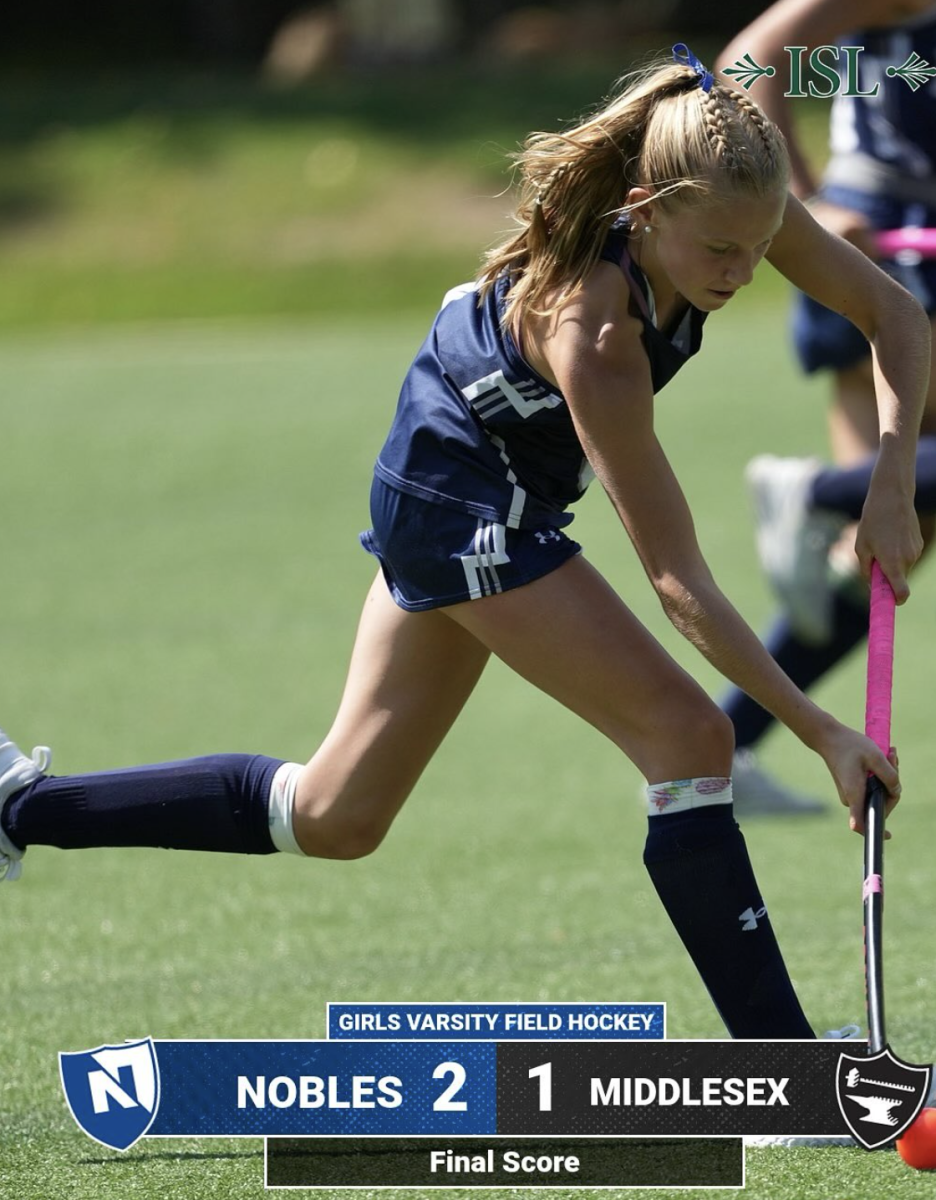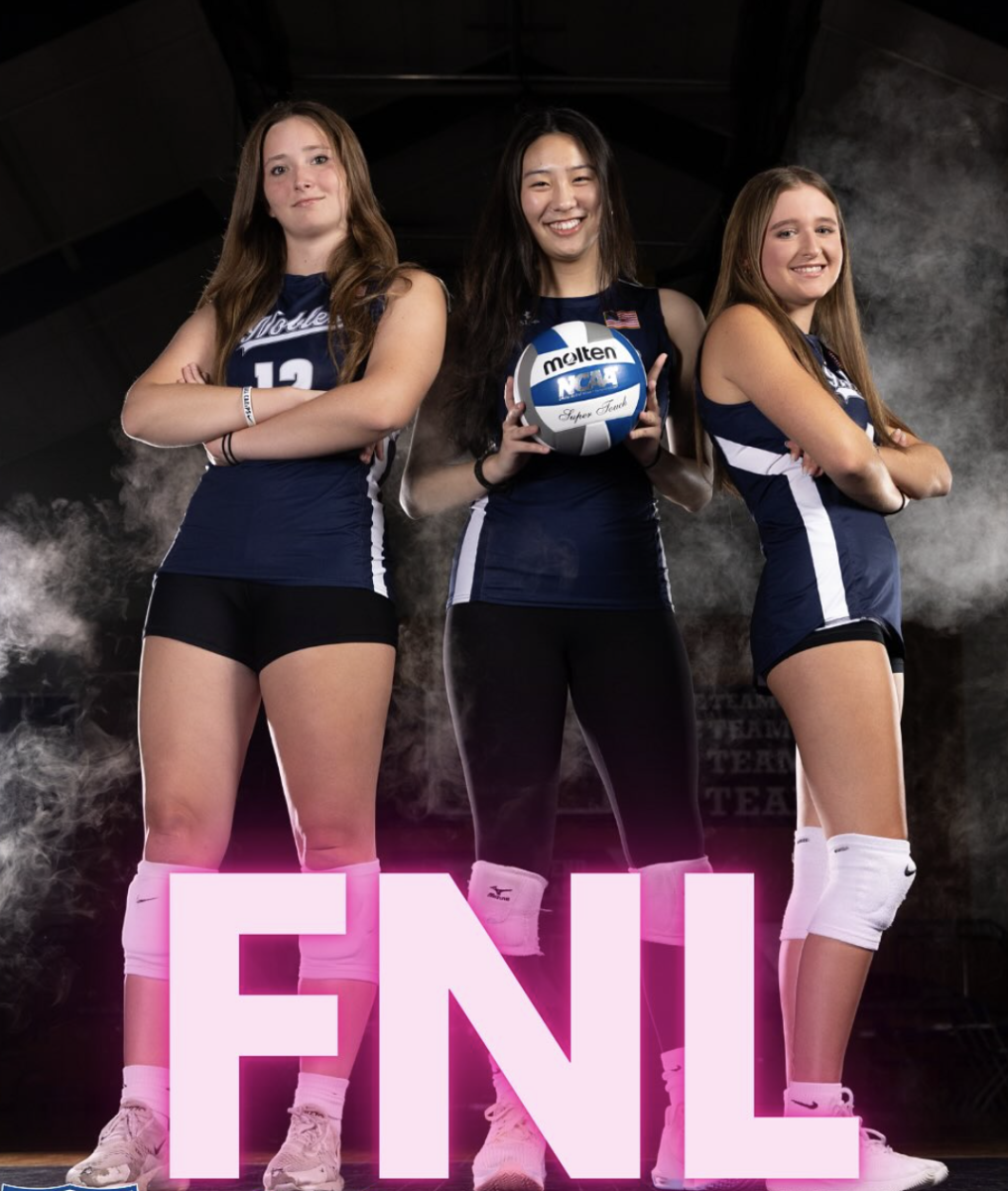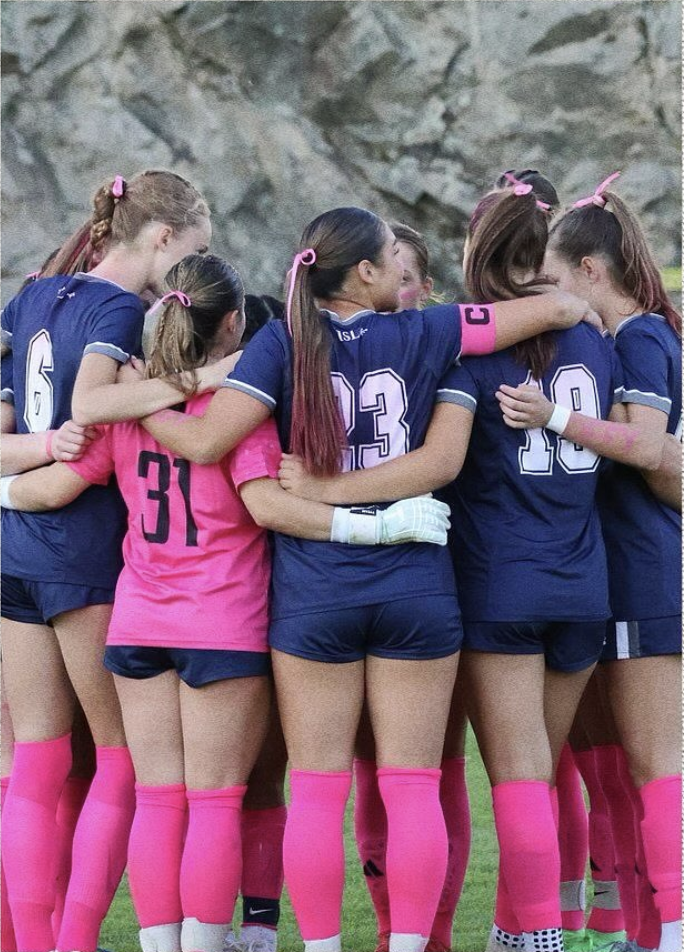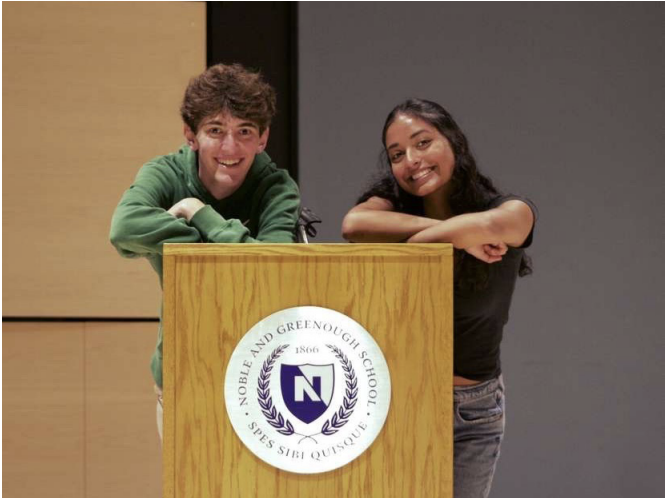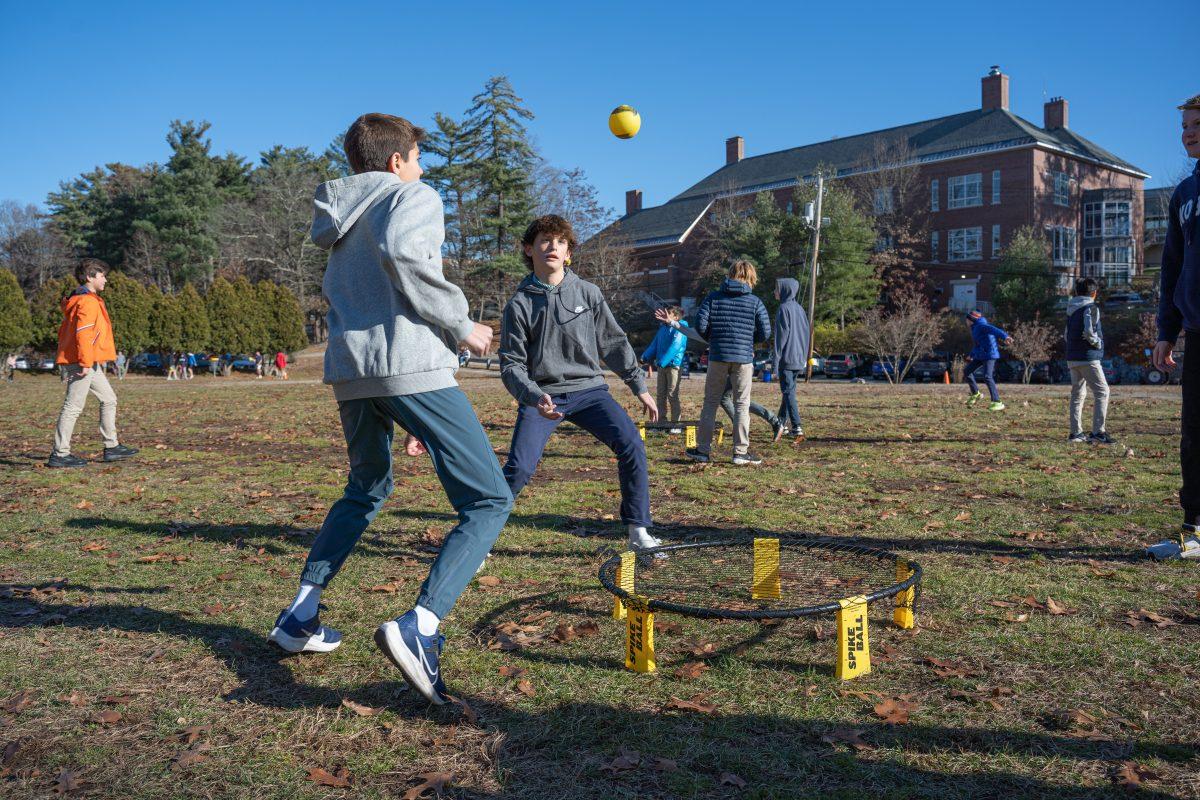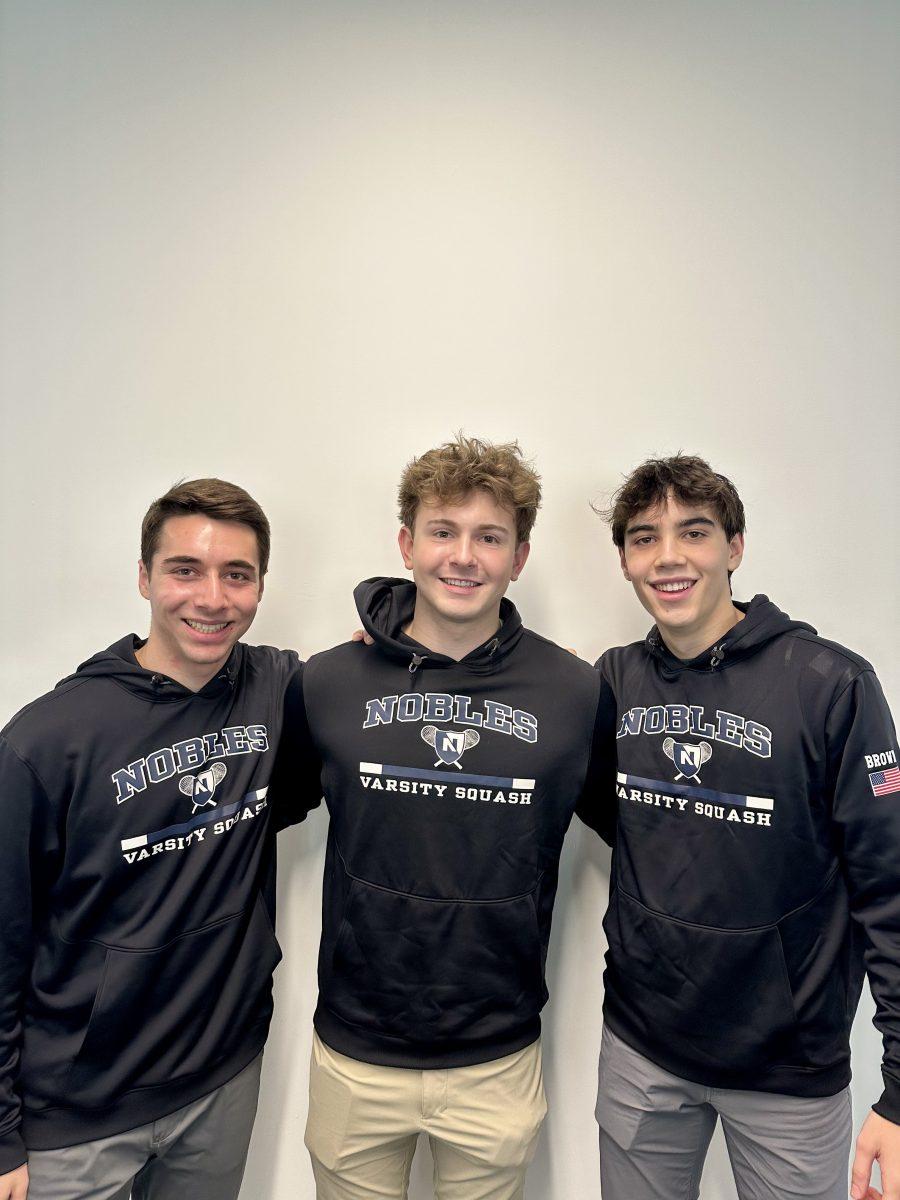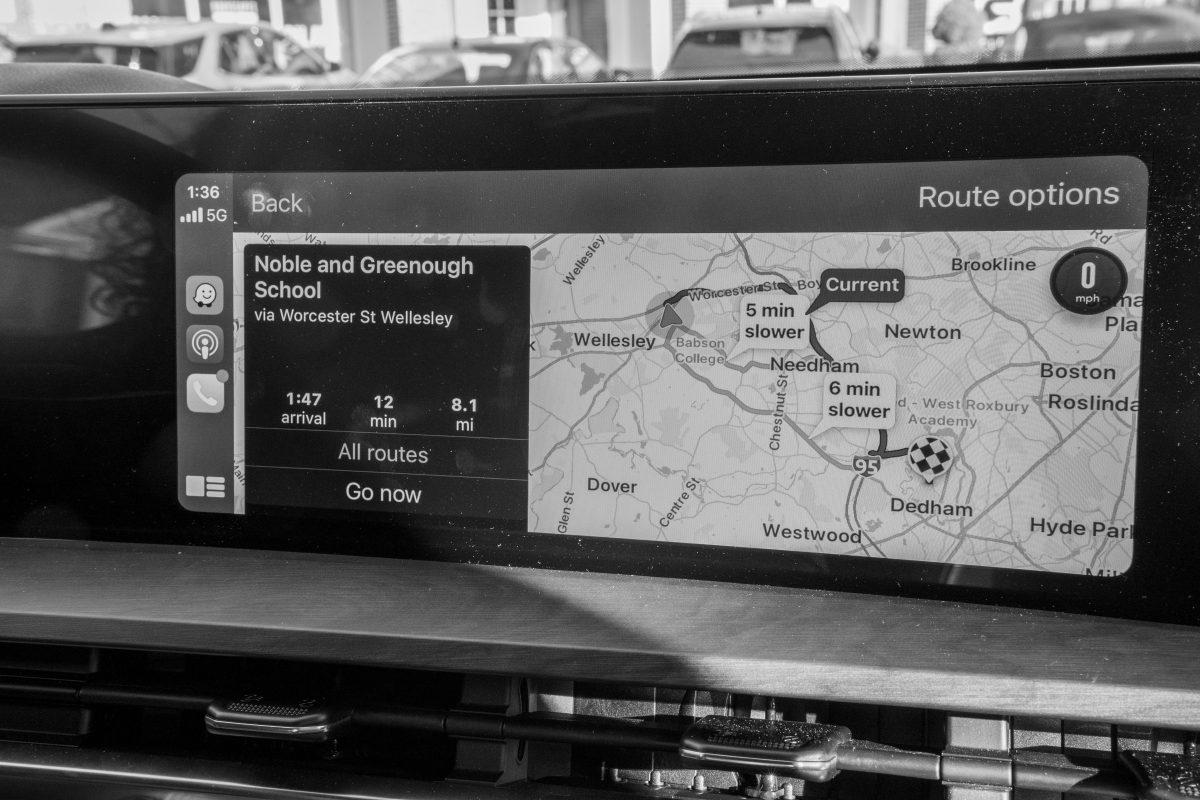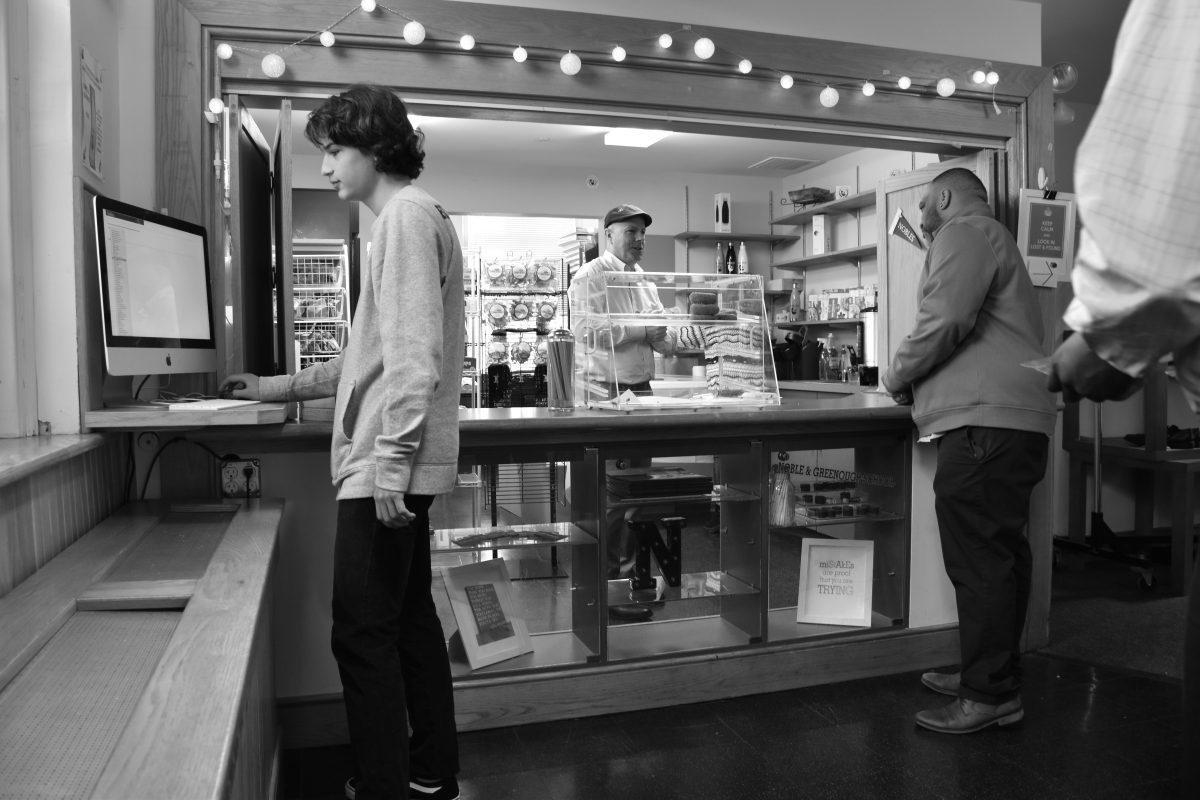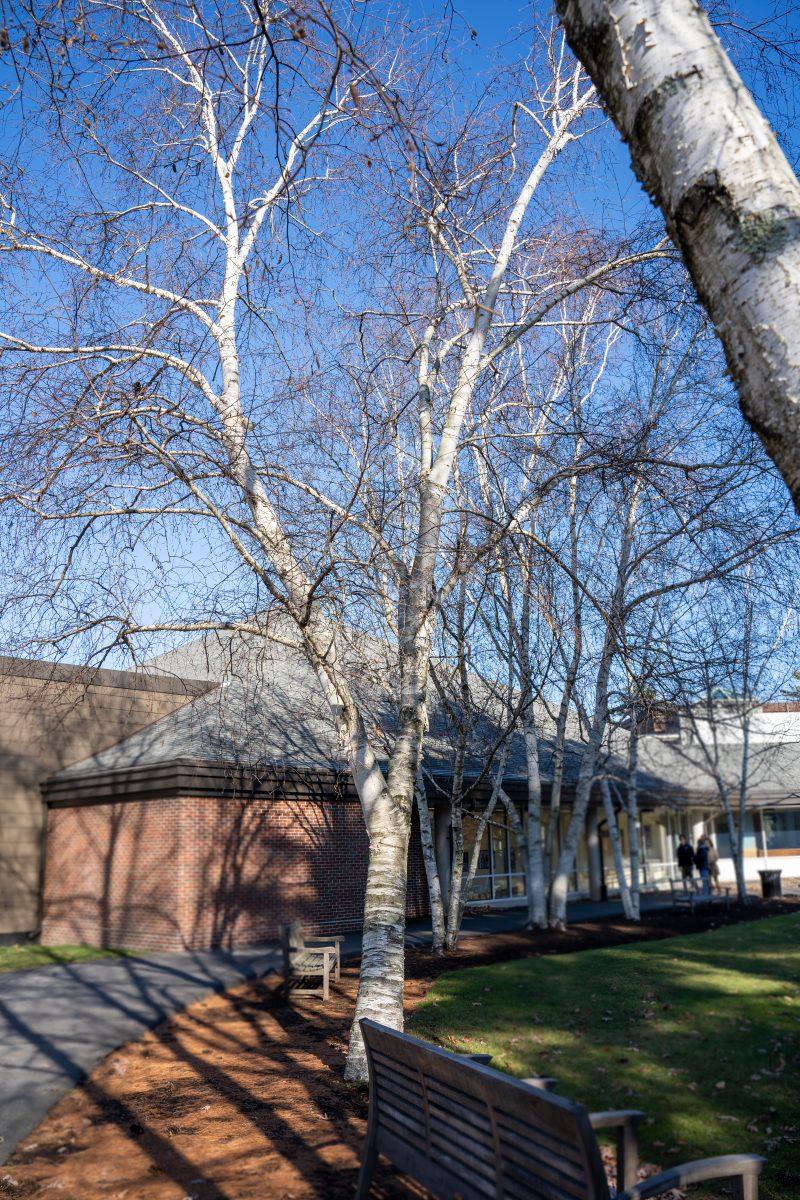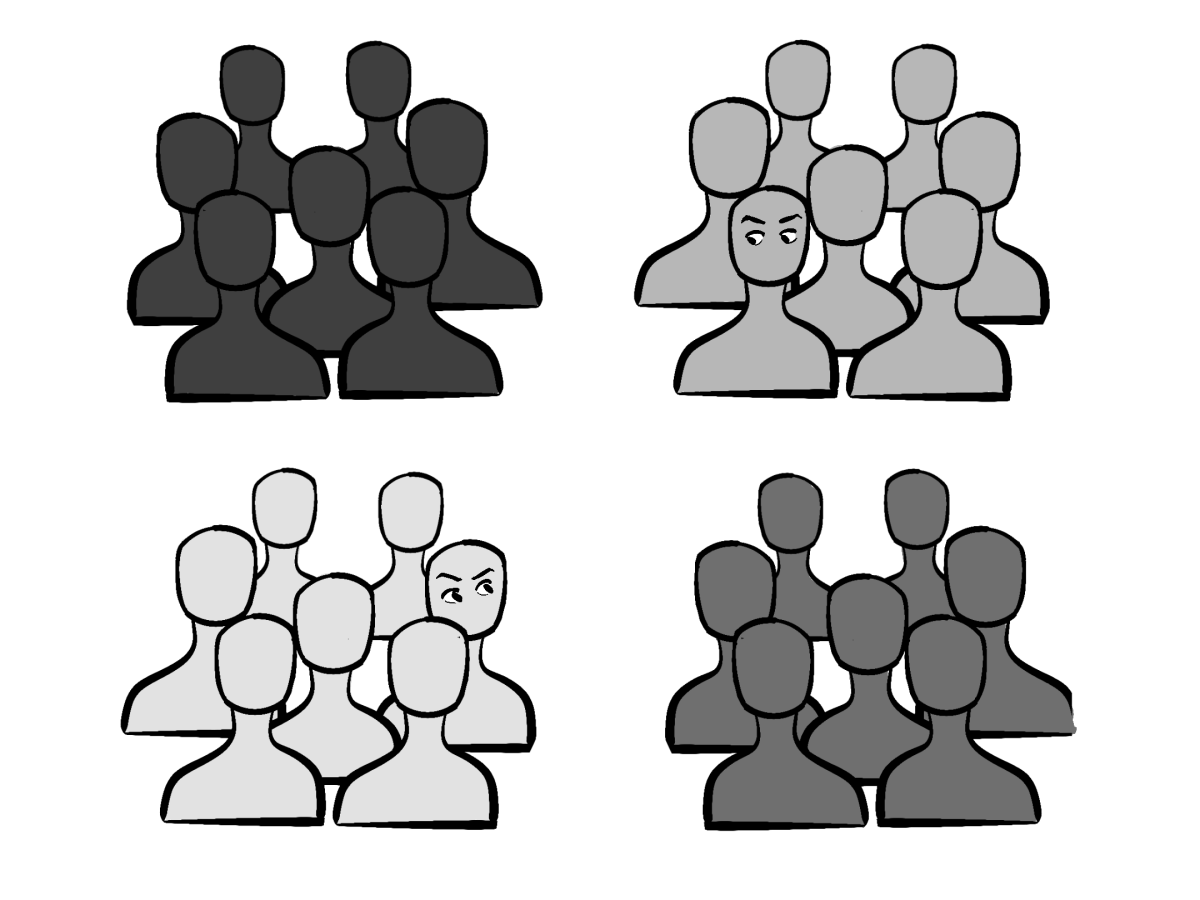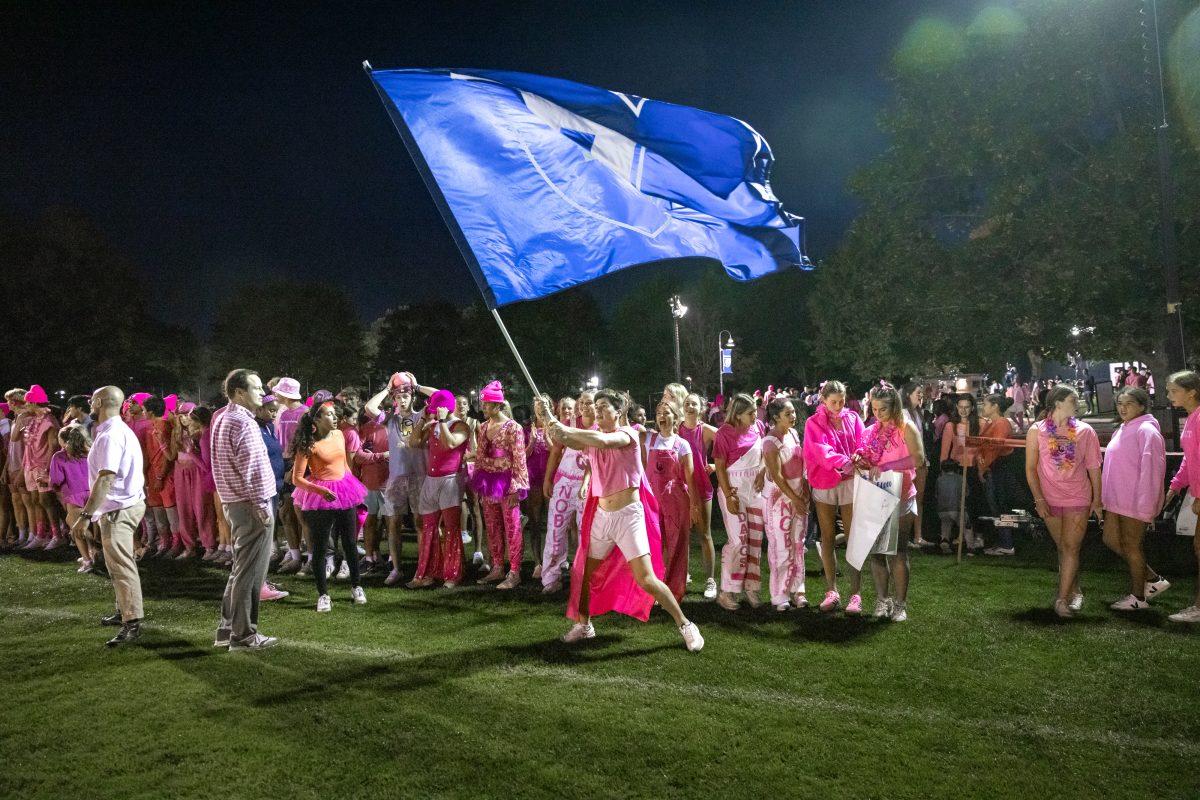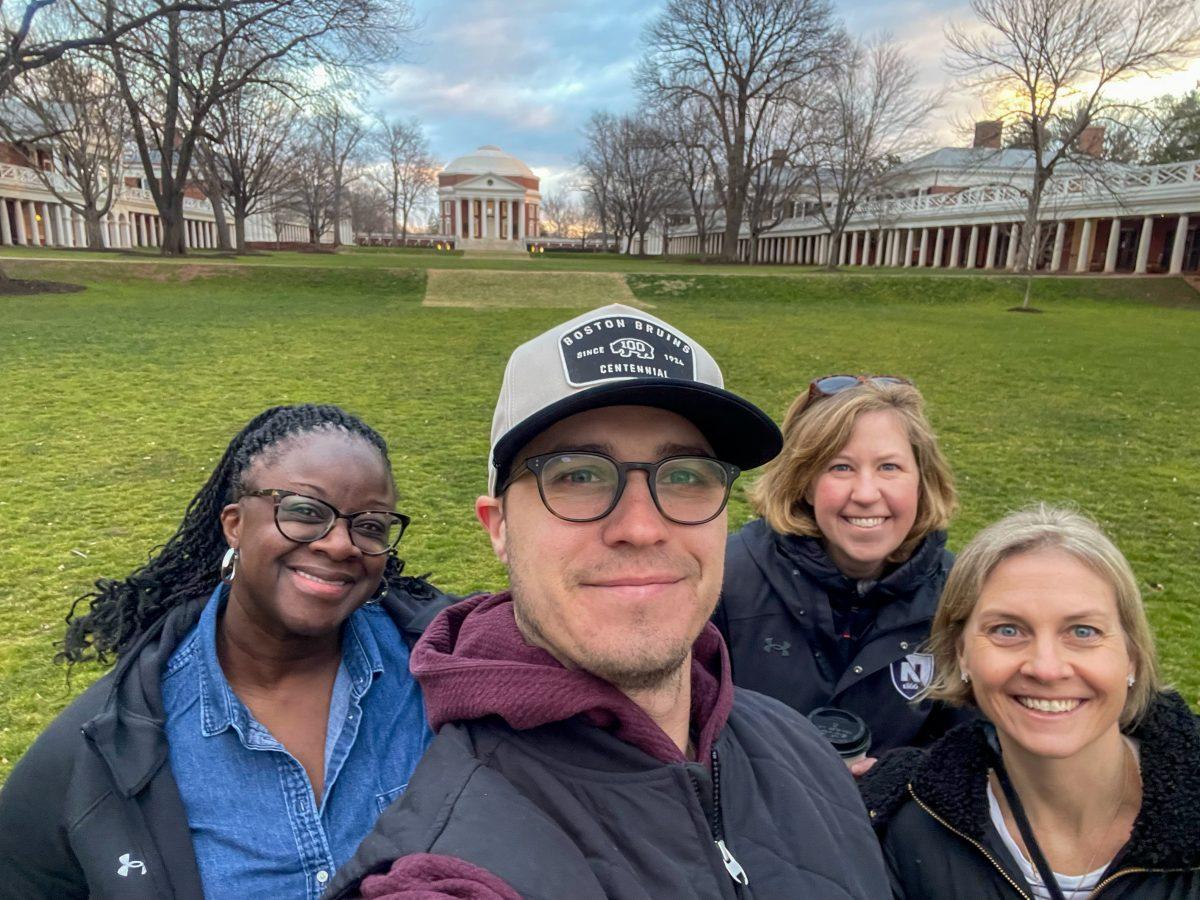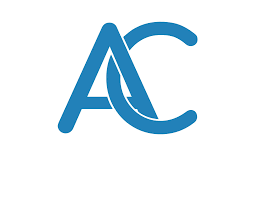Emma Sawatzky, Staff Writer
December 8, 2023
Every day at 10:45 am, the doors of Pratt Middle School are thrown open, releasing Class V and VI students for recess. For the next thirty minutes, shrieks of joy ring out from McLeod field to the jealous ears of Upper School students. The ‘recess shed’ is a cache of Spikeball nets and frisbees just waiting to be used by young students. Currently, recess is undoubtedly a pillar of the Middle School experience–but was it always this way?
While the pandemic brought immense disruption to the school, it also opened up space for a reassessment of student wellness at Nobles. “There’s really not a clear Northstar in terms of what are best practices,” Assistant Head of Middle School Colette Finley said. After spending months on Zoom, the administration opened up conversations about a break from technology and academic work, along with the chance for physical movement in a packed school day.
When first implemented in the old schedule, recess was inconsistent and favored the schedules of certain students over others. However, when the new schedule was launched, health and wellness were among the bedrock principles, designating recess as a priority.
The consistency of recess was also regarded as a community-building tool. “If you don’t see your friends in English class, at least you’re seeing them at recess,” Finley said. Middle School administrators liken the principles behind recess to those of Afternoon Program. Especially in the Middle School, there is a certain commitment to developing the whole person, not just the academic side. Although Nobles is a proud academic institution, an emphasis on connection remains a top priority. “As an institution, we don’t just value a report card. We value how we get along as a community,” Finley said.
Providing this social, screen-free environment, for even thirty minutes a day, remains crucial to mental health. With the rise of technology, especially in the educational sphere, the inclusion of midday exercise is a logical step toward happier and healthier students.
“There’s a lot of research around the brain [emphasizing that] if you take breaks, you’ll actually be more efficient,” Finley said. “And I would say the majority of kids, I think, really do like it,” she added. “They’re just so excited.” By late morning, it seems middle schoolers are itching to stretch their legs with friends. “I’m for recess because I like having the break between classes,” Tenley Ponikiewicz (Class VI) said.
Although Ponikiewicz appreciates the break, it’s evident that the structured nature of recess still leaves something to be desired. “I do like recess, but I want the Upper School schedule,” Ponikiewicz added. “I’d rather have a free like high schoolers do.” Class VI and V students appreciate the pause in their academic day, but from time to time would prefer a more open-ended format.
Certain middle schoolers noted they would prefer to use recess time for homework, raising questions about their workload. Although administrators are constantly reevaluating middle schoolers’ amounts of work, it’s a fine line to walk, and there is no clear path to what is best for students. “I think it’s really hard to collect that data, and I think that certain kids work at different paces,” Finley said.
In general, middle schoolers have around an hour and a half to two hours of homework per night. “That feels right,” Finley said. However, it can feel overwhelming for students when it is their first semester at Nobles. “When kids are used to maybe having no homework, we have a lot of homework,” Finley said. The administration is constantly reevaluating, but students and teachers alike are still working to settle into the new schedule. “I know the teachers try to not make it too much,” Ponikiewicz said.
Furthermore, kids aren’t bound absolutely to this thirty-minute block. Though most will find themselves on McLeod field, teachers are accommodating to more pressing matters that may arise. If middle schoolers need to meet with an advisor or cram for a next-period test, they may elect to do so with permission from an administrator. “It’s not all or nothing,” Finley said. Even still, students are encouraged to use recess time as it is intended.
Although opinions on this topic vary, the Middle School core remains confident in the benefits of this idea. “We have principles behind it, reasons behind it, and we know that not everyone will love it. But we feel strongly that it should exist and that we want to make sure all kids take advantage of it,” Finley said.
(Photo Credit: Zack Mittelstadt)

